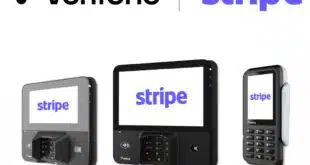With much of the nascent mobile-payments business concentrated on consumer access via streamlined applications rather than browsers, news emerged this week that handset users are rapidly adopting apps. Indeed, usage of downloaded apps crossed the 50% mark in March and stood at 51.1% in May, according to figures released this week by comScore Inc., a Reston, Va.-based company that tracks mobile ownership and usage.
By contrast, only 38.6% of mobile subscribers were using apps in May 2011, according to comScore, which means the latest usage number represents a steep 12.5 percentage-point climb in one year. In just the six months leading up to May, the app-usage number rose just as rapidly from 44.9%. The figures represent usage by both smart-phone and feature-phone users age 13 and up.
Apps’ quick ascent to a solid majority of handset users comes as payments players increasingly rely on the often-free bits of code to ease mobile transactions. Once consumers have downloaded these applications, they can access services merely by activating the app and, in some cases, entering a password. Activation on a smart phone typically means simply touching the app icon on the phone’s screen. This contrasts with browser access, which requires the user to visit a mobile Web site and then log in.
Most current and proposed mobile-wallet products, for example, rely on applications that consumers download to their phones. Prominent examples include the iTunes app from Apple Inc. and an application from Starbucks Corp. that lets customers pay for coffee with their prepaid accounts. Apple in June also introduced a digital-wallet app called Passbook as part of an update to its mobile operating system. Major wallet initiatives from Google Inc. and Isis, a joint venture of the nation’s biggest mobile carriers, rely on apps. Google’s product became commercially available in September, while Isis is expected to launch this summer in Salt Lake City, Utah, and Austin, Texas.
In other trends, adoption for Google’s Android operating system for smart phones appears to have leveled off, with a 50.9% user share in May, little changed from the 50.8%, 51%, and 50.1% shares recorded in April, March, and February, according to comScore. By contrast, Android’s share rocketed from 38.1% in May 2011 to 48.6% by January.
Apple’s iOS system claimed a 31.9% share in May, up over three months from 30.2% in February, while Research In Motion’s share continued to deteriorate, dropping two full points from 13.4% to 11.4%. All told, smart-phone ownership now stands at almost 110 million U.S. consumers, fully 5% higher than in February. Total U.S. ownership of mobile devices, meanwhile, stands at 234 million persons aged 13 and older.
The top device maker in terms of market share is Samsung, with 25.7% of all smart phones and feature phones in users’ hands in May. That’s virtually unchanged from a 25.6% share in February. LG, Apple, Motorola, and HTC follow with shares of 19.1%, 15%, 12%, and 6.1%, respectively. All of these makers saw their shares decline at least slightly in the three months since February except Apple, whose share climbed from 13.5%.
ComScore surveyed more than 30,000 U.S. mobile subscribers to compile its report.





